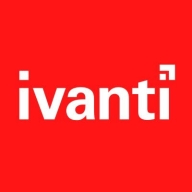


NinjaOne and Ivanti Endpoint Manager are competing products in the endpoint management space. NinjaOne seems to have an edge in ease of deployment and customer service, whereas Ivanti stands out with comprehensive features.
Features: NinjaOne focuses on streamlined remote monitoring, patch management, and automation. It is recognized for straightforward and effective functionality. Ivanti Endpoint Manager emphasizes advanced configuration management, software distribution, and mobile device management, offering robust feature sets for organizations.
Ease of Deployment and Customer Service: NinjaOne is noted for rapid deployment and excellent customer service, leading to reduced implementation time. Ivanti Endpoint Manager, while offering comprehensive support, might pose a complex setup process, potentially affecting businesses with limited IT resources.
Pricing and ROI: NinjaOne generally offers competitive pricing, making it cost-effective and promising a favorable ROI through reduced downtime. Ivanti Endpoint Manager has a higher initial setup cost but is valued for its extensive features, offering a greater ROI over time for those prioritizing comprehensive management.
Everything we've gained from it makes my job easier day after day, and I see value in it as an engineer.
Microsoft Intune not only saves costs by reducing the number of personnel needed but also offers a comprehensive solution for managing laptops, applications, security, individual access, and enrollment.
Importantly, when someone leaves the company, it helps protect document access on their devices.
NinjaOne enables significant time savings, reducing my workload by 40% to 50%, primarily due to remote management capabilities.
When a support ticket is submitted, it directly reaches someone with Intune support expertise.
When I contacted Microsoft, they had the same expertise, if not more, which is phenomenal because I felt heard and my problem was solved.
Sometimes, the support provided is excellent, and the representative is knowledgeable, while other times, the service needs improvement.
It's always better to jump on a call and share screen, which they are willing to do rather than just going through a list of troubleshooting steps.
Their technical support is generally good in terms of quality and speed.
They provided detailed information that helped me convince the security team to approve the necessary port openings.
Our experience with escalation supports, including auto escalation to third-level or engineering support, has been very positive.
The customer support at NinjaOne is excellent, rated ten out of ten.
I rate customer service and support for NinjaOne at seven out of ten due to slow response times.
The scalability of Microsoft Intune is ten out of ten.
Ideally, we want to automatically segregate devices based on user properties like primary use, but currently, dynamic groups seem limited to device properties.
It supports organizations with 200 endpoints and those with more than 15,000 endpoints.
I rate the scalability of Ivanti Endpoint Manager around seven to eight because it offers options to manage the devices effectively, requiring only the addition of licenses.
Ivanti Endpoint Manager is indeed scalable.
I would rate the scalability of NinjaOne as ten out of ten.
The design suggests it is scalable.
We have not experienced downtime, bugs, or glitches.
It appears Microsoft Intune undergoes changes without informing customers.
Microsoft Intune has been very stable.
Regarding stability and reliability, I have never seen the server go down or any functionality taken offline.
Due to the large number of devices in our environment, when we load the console for the first time, it takes a while to update the database.
For stability, once you get the system up and running, it's consistently stable without any lagging, crashing, or downtime.
I would rate the stability a ten out of ten.
Features like unlocking devices sometimes fail, and the support offered for other operating systems is insufficient.
There are communication issues, so you might start working with a feature without knowing if it will be deprecated six months from now.
Many third-party companies offer single-pane-of-glass reporting that shows you what your update environment looks like, how your patch is doing, application status, etc., but Intune's reporting is not intuitive.
It lacks features like easy connection to remote computers and has a complicated software deployment process.
I would suggest improvements in the console interface of the Ivanti Endpoint Manager as it appears outdated, reminiscent of the early 2000s.
When we offboard a user, sending the wipe command or lock command is slightly slower than Workspace ONE.
Security and reporting, including business intelligence tools, are adequate.
The inclusion of XENServer and Proxmox as virtual platforms in NinjaOne is currently missing.
The network monitoring needs to be improved.
Introductory professional services, like a fast-track service, were included with our E5 membership, and there have been no additional costs.
The Intune suite and add-ons, such as batch management and remote help, are costly.
It costs approximately forty euros per user per month.
The transition to a Software-as-a-Service model led to significant price increases without corresponding enhancements in the platform.
Ivanti Endpoint Manager charges a flat fee for the implementation and product purchase, followed by yearly maintenance
The pricing for NinjaOne is appropriate for small companies.
NinjaOne is reasonably priced, particularly with the inclusion of TeamViewer, SentinelOne, and Bitdefender.
The price or licensing of NinjaOne is a little bit high.
Intune excels in configuration and compliance management for Windows 10, ensuring devices receive timely updates and adhere to organizational standards.
Dynamic groups allow us to set conditions for automatic membership, eliminating the need for user intervention or manual review and ensuring a seamless workflow.
Windows Autopatch is the most valuable because it removes the burden of patch management.
It provided essential features needed for our operations, including endpoint management and remote control.
From the features perspective, distribution packages is the best feature in the Ivanti Endpoint Manager.
The most valuable feature of the Ivanti Endpoint Manager is the Windows update patching.
The software's automation tools have solved critical deployment problems for small businesses.
A significant feature of NinjaOne is its remote access capability, which is essential for my clients’ home office usage.
Every month, every quarter, I see new features, and it is always evolving.
| Product | Market Share (%) |
|---|---|
| Microsoft Intune | 32.6% |
| Ivanti Endpoint Manager | 2.7% |
| NinjaOne | 4.9% |
| Other | 59.8% |



| Company Size | Count |
|---|---|
| Small Business | 116 |
| Midsize Enterprise | 46 |
| Large Enterprise | 152 |
| Company Size | Count |
|---|---|
| Small Business | 3 |
| Midsize Enterprise | 2 |
| Large Enterprise | 6 |
| Company Size | Count |
|---|---|
| Small Business | 16 |
| Midsize Enterprise | 2 |
| Large Enterprise | 1 |
Microsoft Intune provides centralized management of mobile devices and applications, ensuring security, compliance, and productivity through integration with Microsoft services like Microsoft 365 and Azure Active Directory.
Organizations use Intune for managing mobile devices and applications, enhancing security and compliance across platforms. With features like single sign-on, conditional access, and zero-touch deployment via Autopilot, it facilitates efficient operations. Intune's scalability, easy enrollment, and capabilities such as remote wipe support diverse device management, offering robust data protection and efficient operation. Despite its features, improvement areas include reporting, compatibility with non-Microsoft devices, and better support for macOS and Linux devices.
What are the key features of Microsoft Intune?
What benefits should users look for in reviews?
In industries such as finance, healthcare, and education, Microsoft Intune is implemented to ensure secure and compliant device management. Companies leverage its capabilities to deploy security policies and manage both corporate-owned and BYOD environments, facilitating a unified approach to data protection and compliance.
Ivanti's All-in-One Endpoint Management solution offers a seamless and comprehensive approach to managing user profiles and all client devices, spanning Windows, macOS, Linux, Chrome OS, and even IoT. With Day Zero support, you can ensure uninterrupted device management. Ivanti provides two key solutions to enhance your organizational operations: Modern Device Management through Ivanti Neurons for UEM, offering a unified view to efficiently manage and secure all devices, and Digital Employee Experience with Ivanti Neurons for Digital Experience, proactively improving productivity, security, and employee retention. This platform also facilitates OS provisioning, software distribution, Mac management, and efficient remote control, reducing resource allocation and enhancing user profile management, all complemented by intuitive dashboards and reporting capabilities. Elevate your endpoint management with Ivanti's comprehensive solution.
NinjaOne provides comprehensive remote monitoring, troubleshooting, and automation via a user-friendly web interface. With a robust mobile app and integration capabilities, it appeals to small businesses seeking cost-effective management solutions.
NinjaOne is designed to streamline IT operations through its remote monitoring, patch management, and automation capabilities. Its integration with Bitdefender and ongoing feature enhancements are valuable, although users express a desire for more third-party compatibility and smoother deployment processes. The platform's SLA system enhances performance tracking, while its continual development is a key attraction. Despite some calls for a more intuitive graphical interface and advanced reporting features, it remains an asset for managed service providers and businesses adapting to cloud-based environments.
What are the most important features?NinjaOne is widely employed across different sectors for server and workstation management, network infrastructure oversight, and client computer support. With its cloud-based framework, it supports managed service providers and businesses shifting to the cloud, ensuring seamless software deployment and improved asset management, making it integral to modern IT environments.
We monitor all Unified Endpoint Management (UEM) reviews to prevent fraudulent reviews and keep review quality high. We do not post reviews by company employees or direct competitors. We validate each review for authenticity via cross-reference with LinkedIn, and personal follow-up with the reviewer when necessary.